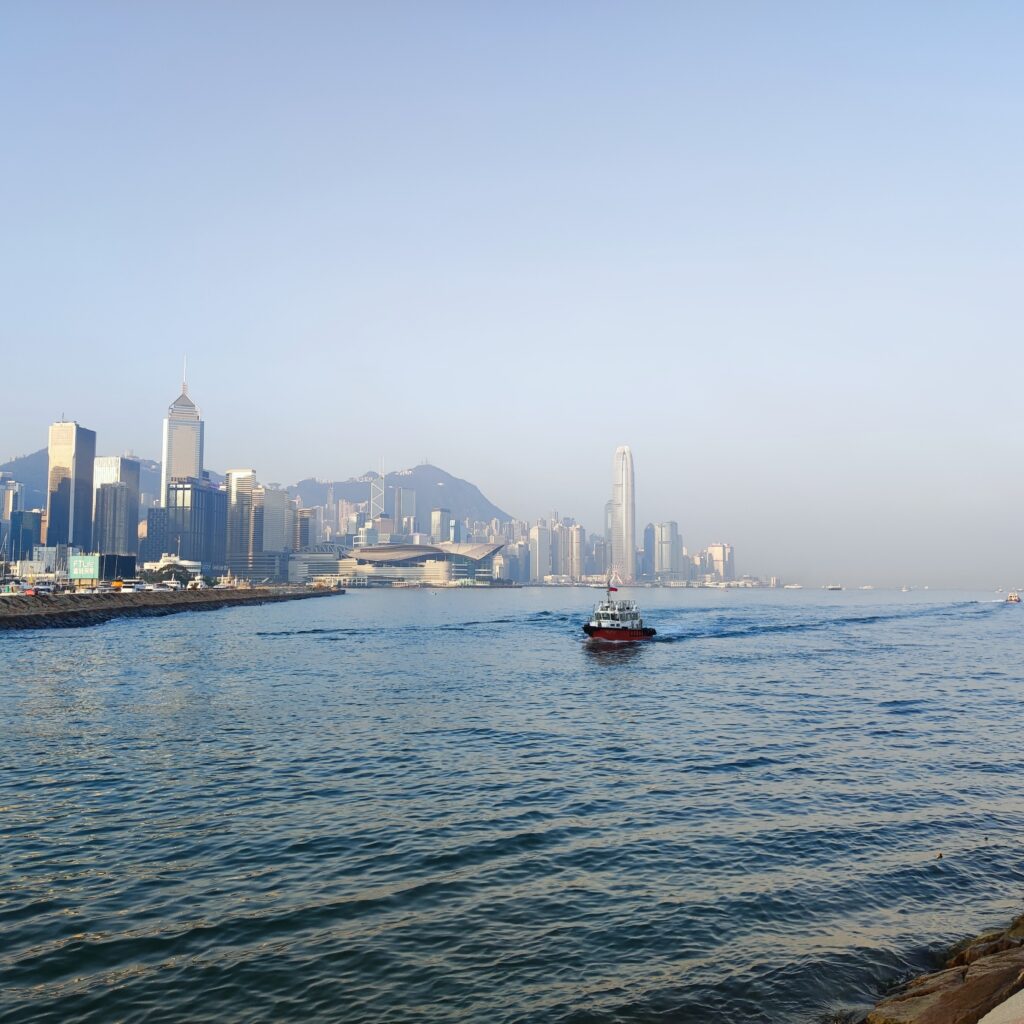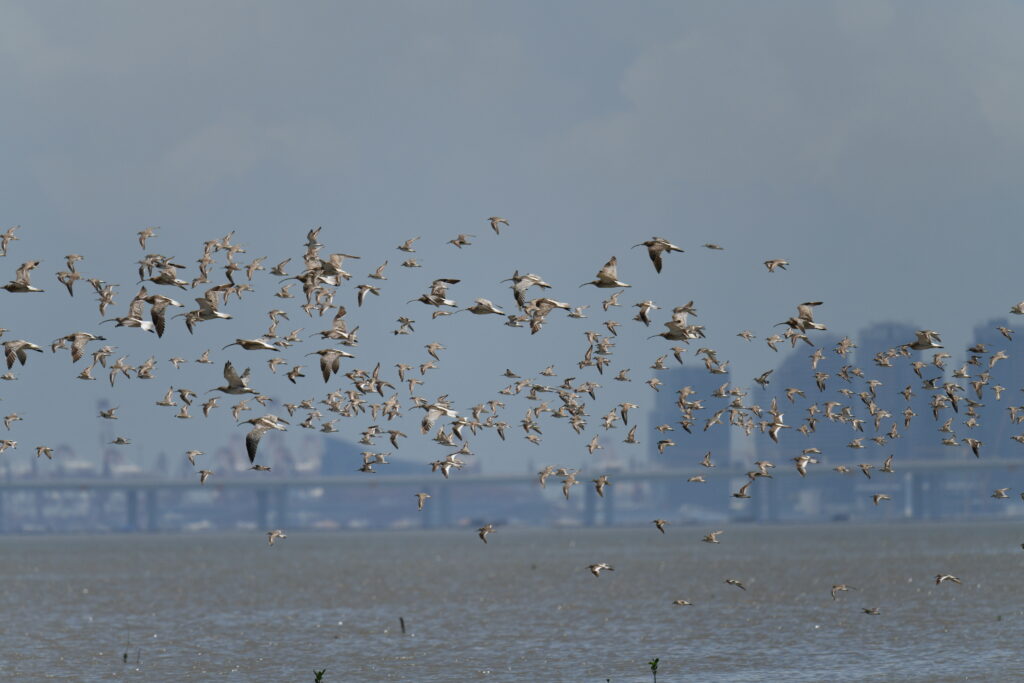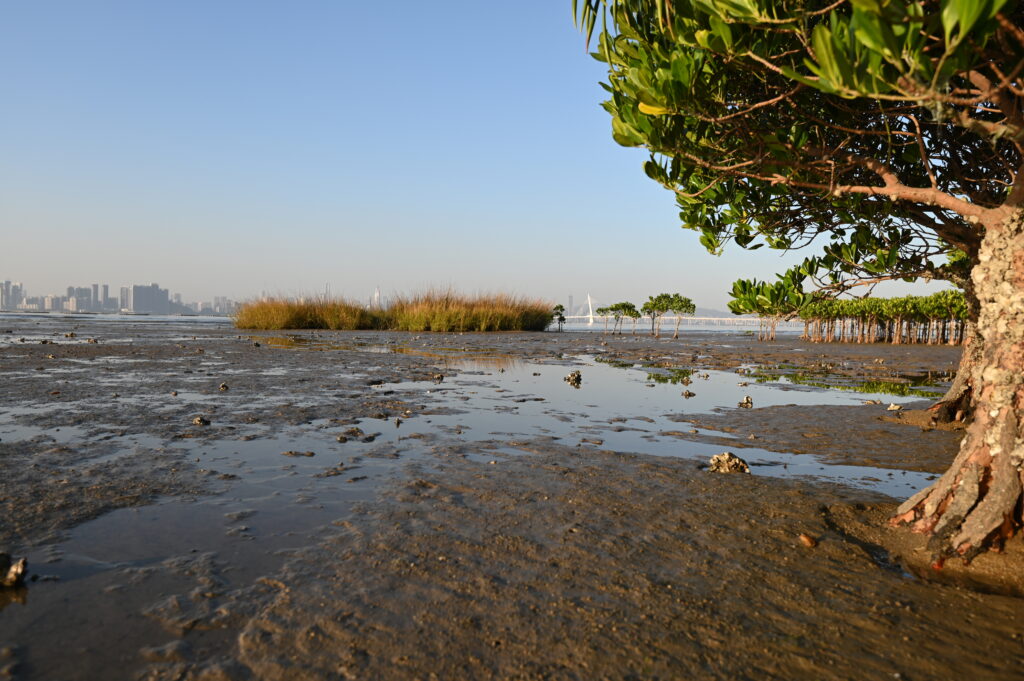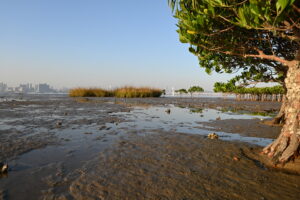CUHK
News Centre
CUHK and the University of Exeter reveal coastal mega-cities
expose ocean wildlife to “relentless” boat traffic
A recent study led by the Joint Centre for Environmental Sustainability and Resilience (ENSURE), a research partnership between The Chinese University of Hong Kong (CUHK) and the University of Exeter, has revealed that coastal mega-cities, such as the Greater Bay Area of China, expose ocean wildlife and habitats to “relentless” boat traffic, posing threats to the marine ecosystem. The research findings have been published in the journal Marine Policy.
The Greater Bay Area, encompassing Guangdong province, Hong Kong and Macao, is home to approximately 86 million people and has the largest population and the second-largest economy of any bay in the world. The study found an average of nearly 6,000 vessels operating daily in the Greater Bay Area, leaving minimal undisturbed space for marine species. This intense maritime activity, driven by economic growth and development, increases shoreline erosion, water turbidity, noise pollution, and the risk of collisions with wildlife.
Dr Felix Leung, Honorary Research Fellow at CUHK’s Institute of Environment, Energy and Sustainability, said: “With Hong Kong and Shenzhen hosting some of the busiest ports in the world, the relentless pace of economic growth and development is taking a toll on the marine ecosystem. To safeguard these ecologically sensitive areas, governments must adhere to the Global Biodiversity Framework, designate sea areas as protected areas and implement effective conservation measures to ensure their protection and sustainable management, preserving them for future generations.”
The research, based on vessel tracking data from 2013 to 2018, mapped the precise locations and daily distribution of marine traffic. In some conservation hotspots, disturbances occurred on 95% of days. The bay also hosts hundreds of fishing vessels that operate daily. It contains many important marine habitats and is home to several animal species of conservation concern including the Chinese white dolphin, finless porpoise, green turtles, Chinese horseshoe crabs and mangrove horseshoe crabs. Dr Phil Doherty from the University of Exeter said: “We found that marine species are likely exposed to relentless presence of vessels. The shallow waters like those of the Greater Bay Area, also mean species cannot escape into the depths, leaving them little refuge.”
The study’s findings, which are freely available, offer valuable insights into marine conservation and coastal planning. Dr Stephen Lang from the University of Exeter said: “The Greater Bay Area is an interesting test case for coastal cities as they grow. We need to bring the environment into conversation as development happens. Pressure on marine environments near coastal cities is only going up and we need to think about how to limit human impact.”
The study suggests that actions include designating shipping lanes away from key habitats, reducing shipping, reducing speeds and switching to quieter, less polluting vessels.
The paper can be found here: https://www.sciencedirect.com/science/article/pii/S0308597X2500154X?via%3Dihub
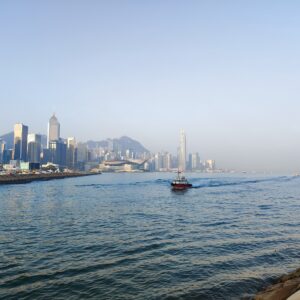
A pilot boat returning to the Typhoon shelter after escorting a large foreign marine vessel in the Victoria Harbour. (Photo: Dr Felix Leung)
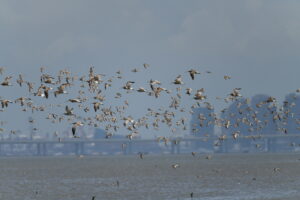
Flock of waders flying over Deep Bay with the skyline of the megacity of Shenzhen in the backdrop. (Photo: Professor Joe Lee Shing-yip)


